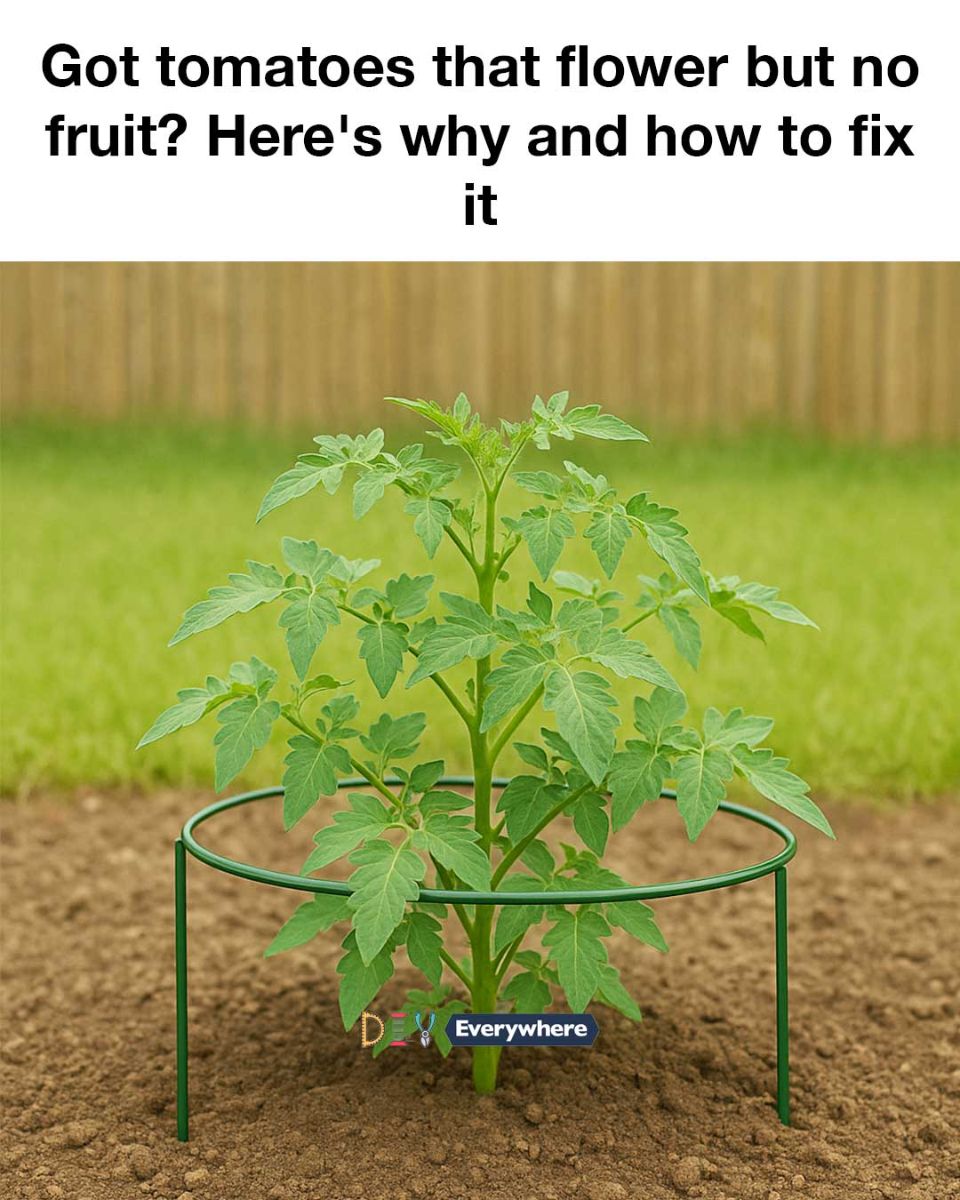Both overwatering and underwatering can stress tomato plants, affecting their ability to set fruit. Consistent moisture levels are vital; fluctuations can lead to blossom drop or poor fruit development. Tomato plants need regular watering, especially during dry spells, but the soil should not be waterlogged.
5. Pest and Disease Problems
Pests such as aphids, whiteflies, and spider mites can damage flowers and reduce fruit set. Diseases like blossom end rot or fungal infections can also affect the plant’s ability to produce fruit. Monitoring for pests and diseases and taking prompt action is essential to protect your tomato plants.
6. Genetic Factors
Some tomato varieties are naturally less prolific in fruit production. Determinate varieties, for example, have a set number of flowers and fruit, while indeterminate varieties continue to produce throughout the season. Choosing the right variety for your climate and growing conditions can influence fruit set.
How to Encourage Fruit Set in Tomatoes
Encouraging fruit set in tomatoes involves addressing the factors that hinder it. By improving pollination techniques, managing temperature extremes, balancing nutrient levels, optimizing watering practices, controlling pests and diseases, and selecting the right tomato varieties, gardeners can enhance their chances of a successful harvest.
1. Improving Pollination Techniques
To improve pollination, gently shake the plants to mimic the natural movement that facilitates pollen transfer. In greenhouses, consider using a small fan to create airflow or introduce pollinators like bees. Hand pollination with a small brush can also be effective in ensuring pollen reaches the pistil.
2. Managing Temperature Extremes
Protect tomato plants from extreme temperatures by using shade cloths during hot spells and row covers during cold nights. Planting tomatoes at the right time of year for your region can also help avoid temperature-related issues. Monitoring weather forecasts and taking preventive measures can safeguard your plants.
3. Balancing Nutrient Levels
see next page
Both overwatering and underwatering can stress tomato plants, affecting their ability to set fruit. Consistent moisture levels are vital; fluctuations can lead to blossom drop or poor fruit development. Tomato plants need regular watering, especially during dry spells, but the soil should not be waterlogged.
5. Pest and Disease Problems
Pests such as aphids, whiteflies, and spider mites can damage flowers and reduce fruit set. Diseases like blossom end rot or fungal infections can also affect the plant’s ability to produce fruit. Monitoring for pests and diseases and taking prompt action is essential to protect your tomato plants.
6. Genetic Factors
Some tomato varieties are naturally less prolific in fruit production. Determinate varieties, for example, have a set number of flowers and fruit, while indeterminate varieties continue to produce throughout the season. Choosing the right variety for your climate and growing conditions can influence fruit set.
How to Encourage Fruit Set in Tomatoes
Encouraging fruit set in tomatoes involves addressing the factors that hinder it. By improving pollination techniques, managing temperature extremes, balancing nutrient levels, optimizing watering practices, controlling pests and diseases, and selecting the right tomato varieties, gardeners can enhance their chances of a successful harvest.
1. Improving Pollination Techniques
To improve pollination, gently shake the plants to mimic the natural movement that facilitates pollen transfer. In greenhouses, consider using a small fan to create airflow or introduce pollinators like bees. Hand pollination with a small brush can also be effective in ensuring pollen reaches the pistil.
2. Managing Temperature Extremes
Protect tomato plants from extreme temperatures by using shade cloths during hot spells and row covers during cold nights. Planting tomatoes at the right time of year for your region can also help avoid temperature-related issues. Monitoring weather forecasts and taking preventive measures can safeguard your plants.
3. Balancing Nutrient Levels
see next page

